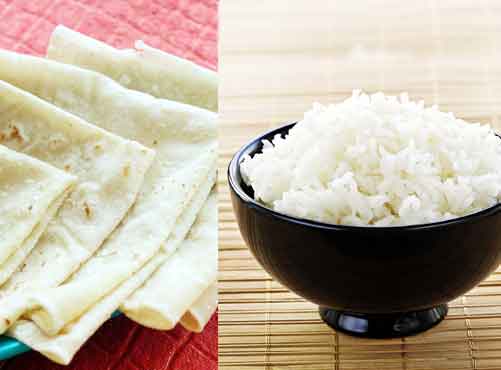Roti, rice similar in carbohydrate value

Rice and roti are the staple foods in most parts of our country. No Indian meal is complete without any of these. Diabetic patients need to be careful of their dietary choices. The diabetic patients can eat rice and chapathi, but in moderate quantity. Rice and roti have similar carbohydrate and caloric value, but they differ in their nutritional value because roti contains more fiber, proteins and minerals. Most commonly people use polished rice which looks white due to removal of fiber rich covering (bran and husk).
With this process, most of the micro-nutrients are lost. Brown rice is little high in fiber, which causes your body to digest slowly. Rice is easier to digest because of its starch content, whereas roti digests slowly. This promotes satiety and keeps you full for longer time, which is a big plus for diabetics in maintaining blood sugar. The glycemic index (GI) is a comparative measure of a carbohydrate foods and their impact on blood sugars.
A food with high GI raises blood sugar than foods with low or medium GI. The glycemic index of long grain white rice is around 73, the glycemic index of brown rice is about 68 and the glycemic index of whole wheat chapati is about 62, so whole wheat chapati and brown rice are better choice than white rice for diabetics. People who are gluten intolerant can switch to brown rice.
To meet all the requirements instead of avoiding completely they can use brown rice at one meal and whole wheat roti at another meal. For better results, consult your dietician to help chose the best staple food.
-
Related News
-
More from Metro India

